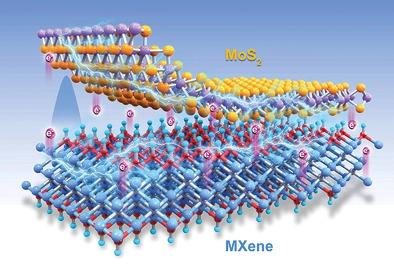当前位置:
X-MOL 学术
›
Adv. Funct. Mater.
›
论文详情
Our official English website, www.x-mol.net, welcomes your feedback! (Note: you will need to create a separate account there.)
Investigation of Contact Electrification between 2D MXenes and MoS2 through Density Functional Theory and Triboelectric Probes
Advanced Functional Materials ( IF 18.5 ) Pub Date : 2023-02-19 , DOI: 10.1002/adfm.202213410 Haiqi Gao 1 , Mingao Hu 1 , Junfei Ding 2 , Bailu Xia 1 , Guanglu Yuan 2 , Huasheng Sun 2 , Qinghao Xu 1 , Shiyu Zhao 1 , Yawei Jiang 1 , Hong Wu 1 , Ming Yuan 1 , Jiahui Li 1 , Bingxiang Li 1 , Jin Zhao 1 , Dewei Rao 3 , Yannan Xie 1
Advanced Functional Materials ( IF 18.5 ) Pub Date : 2023-02-19 , DOI: 10.1002/adfm.202213410 Haiqi Gao 1 , Mingao Hu 1 , Junfei Ding 2 , Bailu Xia 1 , Guanglu Yuan 2 , Huasheng Sun 2 , Qinghao Xu 1 , Shiyu Zhao 1 , Yawei Jiang 1 , Hong Wu 1 , Ming Yuan 1 , Jiahui Li 1 , Bingxiang Li 1 , Jin Zhao 1 , Dewei Rao 3 , Yannan Xie 1
Affiliation

|
Contact electrification (triboelectrification) (CE) is a universal phenomenon in ambient environment and has been recorded for more than 2600 years. Nonetheless, the intrinsic mechanism of CE still remains controversial. Herein, based on first-principles theory, the underlying mechanism in CE is systematically investigated between metallic MXenes and semiconductive MoS2. The results show that the work functions of contacting materials dominate the direction of electron transfer during CE process. That is, the electron will be transferred from the material with low work function to the one with high work function. The theoretical prediction is verified experimentally through investigating triboelectric probes based on MXenes and MoS2 nanomaterials. Additionally, it is noted that the interfacial potential barrier and the work function difference together modulate the amount of transferred electron. Electron transfer mainly occurs in the repulsive forces region where the interaction distance between the two materials is shorter than the normal bonding length. The quantum calculation results agree well with the Wang transition theory. Furthermore, it is also noticed that, due to the wave-particle duality of electron, electron transfer will obviously occur at the attractive force region when the two contacting materials exhibit a larger work function difference.
中文翻译:

通过密度泛函理论和摩擦电探针研究 2D MXenes 和 MoS2 之间的接触带电
接触起电(摩擦起电)(CE)是周围环境中的普遍现象,已有 2600 多年的记录。尽管如此,CE的内在机制仍然存在争议。在此,基于第一性原理理论,系统地研究了金属 MXenes 和半导体 MoS 2之间 CE 的潜在机制。结果表明,接触材料的功函数决定了 CE 过程中电子转移的方向。也就是说,电子将从功函数低的材料转移到功函数高的材料。通过研究基于 MXenes 和 MoS 2的摩擦电探针,通过实验验证了理论预测纳米材料。此外,值得注意的是,界面势垒和功函数差共同调节电子转移量。电子转移主要发生在排斥力区域,其中两种材料之间的相互作用距离短于正常键合长度。量子计算结果与王氏跃迁理论吻合良好。此外,还注意到,由于电子的波粒二象性,当两种接触材料表现出较大的功函数差异时,电子转移将明显发生在吸引力区域。
更新日期:2023-02-19
中文翻译:

通过密度泛函理论和摩擦电探针研究 2D MXenes 和 MoS2 之间的接触带电
接触起电(摩擦起电)(CE)是周围环境中的普遍现象,已有 2600 多年的记录。尽管如此,CE的内在机制仍然存在争议。在此,基于第一性原理理论,系统地研究了金属 MXenes 和半导体 MoS 2之间 CE 的潜在机制。结果表明,接触材料的功函数决定了 CE 过程中电子转移的方向。也就是说,电子将从功函数低的材料转移到功函数高的材料。通过研究基于 MXenes 和 MoS 2的摩擦电探针,通过实验验证了理论预测纳米材料。此外,值得注意的是,界面势垒和功函数差共同调节电子转移量。电子转移主要发生在排斥力区域,其中两种材料之间的相互作用距离短于正常键合长度。量子计算结果与王氏跃迁理论吻合良好。此外,还注意到,由于电子的波粒二象性,当两种接触材料表现出较大的功函数差异时,电子转移将明显发生在吸引力区域。














































 京公网安备 11010802027423号
京公网安备 11010802027423号